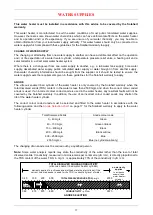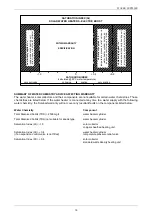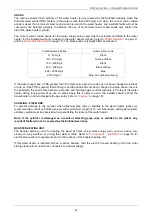
REGULAR CARE
16
FLUSHING THE SOLAR COLLECTORS
It may be necessary to flush the solar collectors if there is sediment in the water supply. This should be
conducted in the morning, within three hours of sunrise.
Warning:
It is important flushing of the solar collectors be conducted early in the morning, within three
hours of sunrise, when the sun is low in the sky. The water temperature inside the solar collectors is lower as
the solar collectors would not have had a chance to gain as much heat as later in the day. Flushing the solar
collectors at a time later than this can result in the discharge of high temperature water and in some
circumstances, high temperature steam.
To flush the solar collectors:
Open a hot water tap and allow the water to run for five (5) minutes prior to flushing the solar
collector(s).
Close the hot tap.
Wait a further five (5) minutes before attempting to flush the solar collectors.
This will assist in the transfer of any high temperature water in the solar collector(s) to the solar storage
tank.
Warning:
Exercise care, as water discharged from the solar collectors may be of a very high
temperature.
To flush the solar collectors, follow the procedure
“Bleeding the Solar Collectors”
on page 12, allowing
the water to flow from the bleed valve drain line for five minutes before closing the bleed valve.
It is recommended to flush the solar collectors every five years. This will assist in keeping the solar
collectors, solar cold pipe and solar hot pipe clear of sediment.
HOUSEHOLD MAINTENANCE AROUND THE SOLAR STORAGE TANK
Care should be taken when conducting general household maintenance, such as lawn mowing and grass
cutting, around the solar storage tank. Careless use of devices such as a whipper snipper could damage or
cut a sensor lead or the electrical cable.
If a sensor lead or the electrical cable is damaged or cut, solar contribution may not be achieved and the
freeze protection system may be rendered inoperative. In addition, if the electrical cable has been damaged
or cut, wiring may be exposed leading to a dangerous situation.
On a regular basis, inspect around the water heater for insect infestations, such as ants. Insects may look for
a warm place to nest, particularly in wet weather. Insects encroaching into or nesting in the water heater and
the solar control unit can interfere with the operation of the water heater and also damage components.
Spray insecticide around the water heater if necessary to rid the area of insects.
















































